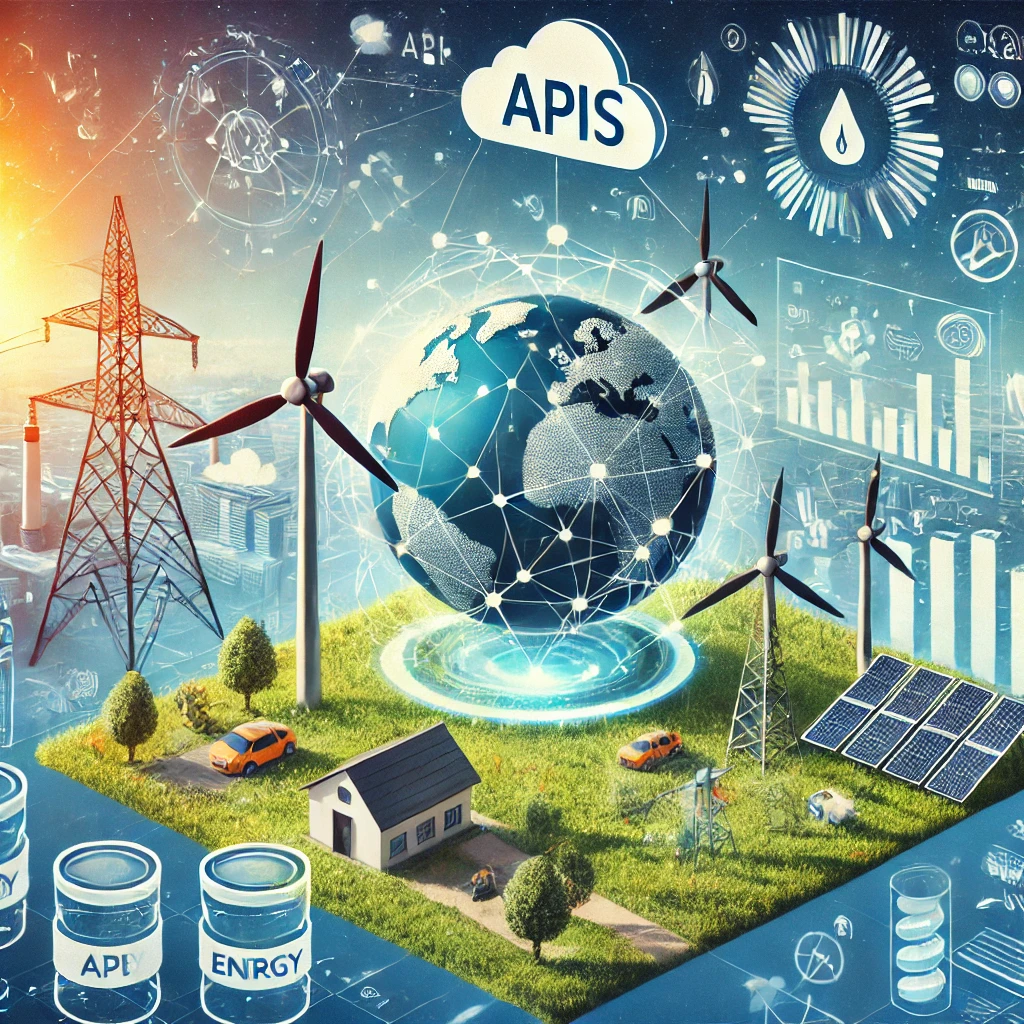Designing APIs for Energy Management Platforms with Syncloop

Syncloop provides a powerful platform for designing APIs tailored for energy management platforms. With tools for data integration, real-time processing, and scalability, Syncloop simplifies the development of robust APIs. This blog explores how to design APIs for energy management platforms using Syncloop and best practices for implementation.
The Role of APIs in Energy Management Platforms
APIs are essential for the functionality of energy management platforms, enabling:
- Data Collection: APIs gather data from smart meters, IoT devices, and external sources like weather forecasts.
- Data Analysis: APIs connect platforms to analytics tools for insights on energy consumption trends.
- User Interaction: APIs power user dashboards, mobile apps, and notifications.
- Automation: APIs trigger actions such as adjusting energy usage or sending alerts.
- Integration: APIs facilitate integration with third-party systems like billing platforms and renewable energy sources.
How Syncloop Simplifies API Design for Energy Management
Syncloop offers a comprehensive set of features to support energy management platforms:
- Dynamic Data Integration Collect data from diverse sources, including IoT sensors, external APIs, and databases.
- Real-Time Processing Enable real-time decision-making with APIs optimized for low-latency data flows.
- Scalable Infrastructure Handle large volumes of data from numerous devices and users.
- Event-Driven Architecture Trigger automated actions based on energy usage thresholds or external events.
- Security and Compliance Protect sensitive data with encryption and role-based access controls while ensuring compliance with standards like ISO 50001.
- Monitoring and Analytics Track API performance and data flow metrics to optimize energy management operations.
Steps to Design APIs for Energy Management with Syncloop
Step 1: Define Use Cases and Requirements
Identify the key functionalities of the energy management platform. For example:
- Monitoring energy consumption in real time.
- Providing insights and recommendations for energy savings.
- Enabling remote control of devices like HVAC systems.
- Generating reports on energy usage and costs.
Step 2: Design Data Models
Use Syncloop’s dynamic data modeling tools to structure data from various sources. Ensure consistency by mapping fields across systems, such as:
- Energy consumption data (timestamp, usage, device_id).
- Environmental data (temperature, humidity, forecast).
- User preferences (target_temperature, scheduling).
Step 3: Create API Endpoints
Define endpoints for functionalities like:
- /energy/usage for fetching energy consumption data.
- /devices/control for adjusting device settings.
- /alerts/notifications for sending alerts based on thresholds.
- /reports/generate for generating usage and cost reports.
Step 4: Implement Real-Time Processing
Enable real-time data flow by integrating IoT devices and sensors. Use Syncloop’s event-driven architecture to trigger actions like:
- Reducing energy usage during peak demand.
- Sending alerts for abnormal consumption patterns.
- Adjusting device settings based on weather data.
Step 5: Secure API Communications
Use Syncloop’s security features to protect data and ensure only authorized users and systems can access APIs. Implement:
- OAuth 2.0 for authentication.
- Role-based access controls to restrict permissions.
- Data encryption for secure transmission.
Step 6: Test and Optimize
Simulate various usage scenarios in Syncloop’s testing environment to ensure APIs handle high traffic, complex workflows, and edge cases effectively.
Step 7: Deploy and Monitor
Deploy APIs using Syncloop’s scalable infrastructure. Use monitoring tools to track API performance and usage patterns for ongoing optimization.
Best Practices for Designing Energy Management APIs
- Adopt RESTful Design Principles Use intuitive and consistent API endpoint structures for ease of integration.
- Ensure Scalability Design APIs to handle increasing numbers of devices and users without performance degradation.
- Prioritize Real-Time Processing Optimize APIs for low latency to ensure timely updates and actions.
- Implement Role-Based Access Control (RBAC) Secure sensitive energy data by defining granular permissions for users and systems.
- Provide Comprehensive Documentation Document API functionality, data models, and usage guidelines to facilitate seamless integration.
Example Use Case: Smart Home Energy Management
A smart home energy management platform uses Syncloop to integrate devices, collect data, and optimize energy usage. Key functionalities include:
- Real-Time Monitoring: APIs collect and display live energy consumption data from smart meters.
- Energy Optimization: APIs adjust HVAC settings based on user preferences and weather data.
- Alerts and Notifications: APIs send alerts for unusual energy usage patterns or high costs.
- Data Integration: APIs sync data with third-party renewable energy systems and billing platforms.
- User Insights: APIs generate personalized recommendations for energy savings.
Benefits of Using Syncloop for Energy Management APIs
- Efficient Data Integration: Simplify connections between devices, platforms, and third-party services.
- Enhanced Scalability: Handle increasing data volumes from expanding energy networks.
- Real-Time Optimization: Enable dynamic responses to energy usage and environmental conditions.
- Improved Security: Protect sensitive data and ensure compliance with industry standards.
- Faster Development: Accelerate API creation with Syncloop’s intuitive tools and features.
The Future of Energy Management Platforms
As the world moves toward sustainable energy practices, APIs will play a central role in integrating diverse energy sources, optimizing consumption, and enabling smarter systems. Syncloop provides the tools needed to build scalable, secure, and efficient energy management APIs, empowering businesses and consumers to achieve energy efficiency goals.
Image Description
A conceptual graphic illustrating energy management APIs powered by Syncloop, featuring real-time data flow, IoT device integration, and monitoring dashboards. The image highlights secure and scalable API operations for energy optimization.
Back to Blogs